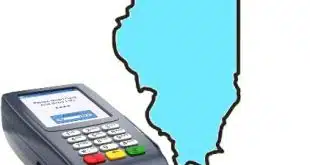In a major vote of confidence for an 11-month-old form of electronic payment, Hy-Vee Inc., a 224-unit supermarket chain based in West Des Moines, Iowa, has installed back-office conversion (BOC) in 21 of its stores in the Des Moines area since last August and plans to roll out the system to all its stores across seven states, though it has no deadline for finishing the implementation, according to Kevin Reeve, assistant vice president and controller for the grocer. “We're at the point where the system is working for us,” Reeve told bankers and other payments executives on Wednesday at the Bank Administration Institute's TransPay conference in Dallas. Reeve said Hy-Vee looked at or tried two other alternatives for electronic check processing but rejected them in favor of BOC, an application that allows retailers to convert checks in batches to electronic formats for settlement through the automated clearing house network. Point-of-purchase (POP) conversion, which also relies on the ACH, slowed down the company's checkout lanes because of the explanations cashiers had to make to customers, Reeve said. At the same time, remote deposit capture based on sending checks into image exchange “didn't offer us any savings,” he said, because of Hy-Vee's relatively low average ticket. The average check value at Hy-Vee falls in the $40 range, Reeve tells Digital Transactions News. Meanwhile, BOC offers substantial savings, he said. “We're paying 4 to 5 cents to deposit paper, while ACH is one penny, so there's huge potential cost savings for us,” he told the audience. With POP, cashiers hand checks back to customers at the point of sale after scanning them for conversion, a step that often provokes time-consuming questions. With remote capture using image exchange, float gains on faster clearing of low-value items may not offset the added processing costs. NACHA, the rules-setting organization for the ACH, introduced BOC last March to allow merchants to convert checks in bulk away from checkout lanes, thus addressing the problem Reeve and other merchants have cited concerning POP. But, since only checks written on consumer accounts are eligible for ACH conversion, Reeve said the 21 Hy-Vee stores using BOC send 85% of their checks through the ACH. The remaining items, made up of business checks and money orders, must be submitted for processing through image exchange. A decision engine from NCR Corp. detects these items and assigns them for processing via rules based on the Check Clearing Act for the 21st Century (Check 21), the 2004 law that fostered image exchange. Reeve said operational elements of the implementation have gone smoothly. The company managed staff training with a one-hour webinar, while customer calls to an 800 number posted at the point of sale have been minimal. Another cost benefit, he added, is that the need for armored-car service has dropped. “We've gone from six-day-a-week courier service to three in some stores,” he noted. The volume of returned items did spike up, he said, because these items are no longer automatically re-presented. He said Hy-Vee has tried to manage deposit times so as to avoid having items hit customers' checking accounts sooner than paper checks do. To collect on bounced checks, the chain uses returned-check conversion (RCK), another ACH application.
Check Also
Has the CCCA Reached the End of the Road?
With the odds against the Credit Card Competition Act coming to a vote before the …





